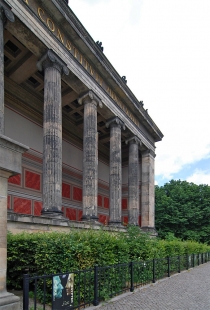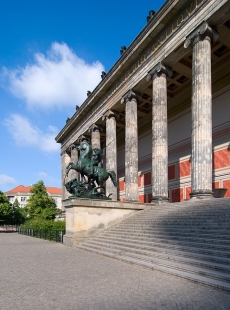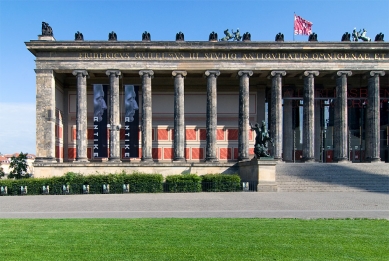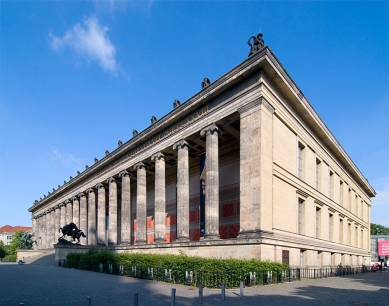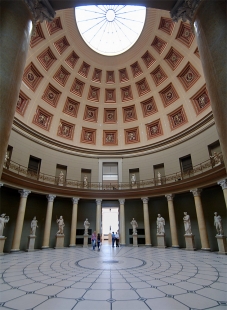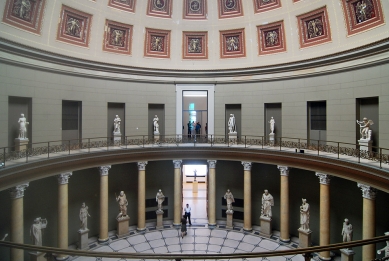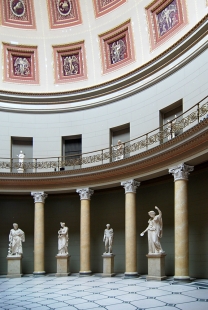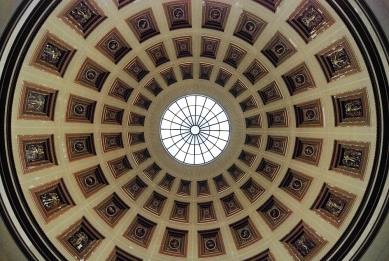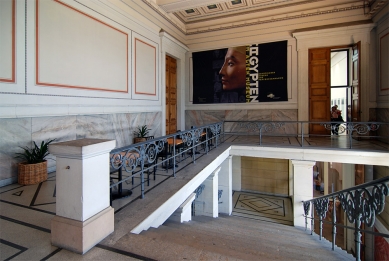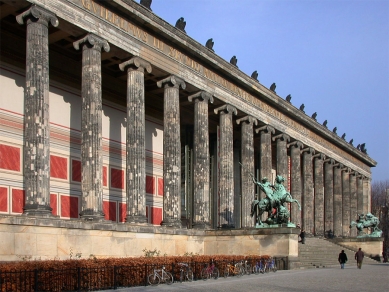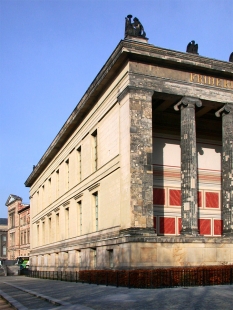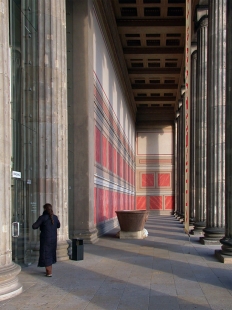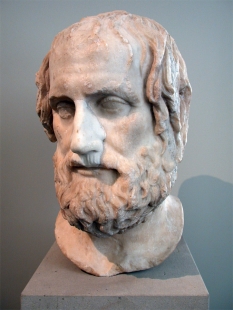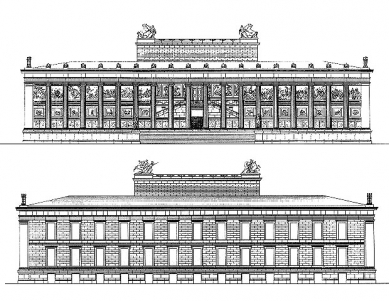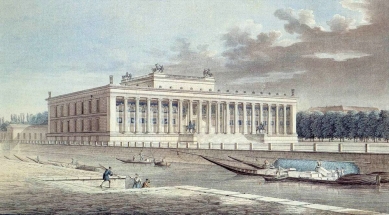
Altes Museum

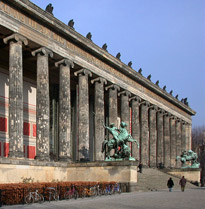 |
A broad staircase flanked by sculptures leads to a hall supported by eighteen Ionic sandstone pillars and two corner pilasters. The entire length of attic facing the Leisure Garden carries the inscription: "FRIDERICUS GUILELMUS III STUDIO ANTIQUITATIS OMNIGENIAE ET ARTIUM LIBERALIUM MUSEUM CONSTITUIT MDCCCXXVIII" ("Friedrich Wilhelm III dedicated this museum to the study of all antiquity and liberal arts in 1828"). The portico leads through an impressive main portal of bronze to a double staircase ending in an upper hall resembling a vestibule. The staircase and vestibule, separated by a colonnade create a fascinating impression of both interior and exterior space while offering an unusual panorama of Berlin: the Leisure Garden, the Cathedral, the former castle square and the armory. The rotunda adjacent on the interior, an adaptation of the Roman Pantheon painted according to Schinkel's specifications and with Greek statues positioned between the pillars, was intended as a solemn space to set the mood for the museum visit. The Altes Museum, which had been partly destroyed during the war, was restored until 1966. It is among the oldest, artistically most significant architectural works of Karl Friedrich Schinkel.
berlin.de
0 comments
add comment




